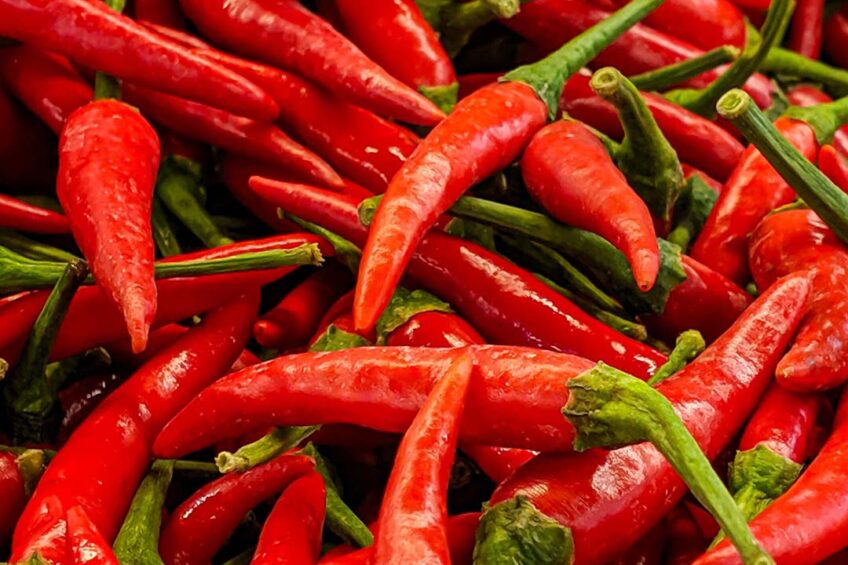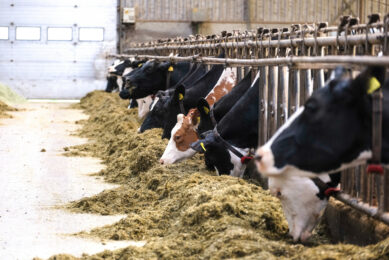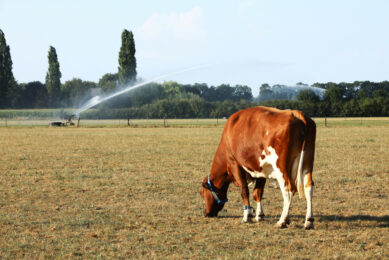Chilli peppers help cows use energy more efficiently

Cows fed with the botanical extract capsicum oleoresin, obtained from chilli peppers and/or clove oil, has been shown to help dairy cows use feed energy more efficiently and emit less methane from their largest stomach.
Adding the essential oils to the cattle’s rations resulted in improved efficiency of energy utilisation in peak-lactation dairy cows, according to a study from Penn State researchers in the United States.
The findings suggest that cattle would use the available energy for body weight gain rather than milk yield or milk components. They suggest a potential positive physiological and environmental effect of supplementation due to the combination of botanicals. From previous studies, the researchers knew that botanicals had the potential to modify fermentation in the dairy cow’s rumen, but lead author Professor Alex Hristov said he was particularly interested in the post-ruminal, physiological effects of the botanicals.
His research group in the College of Agricultural Sciences has experimented with supplementing the feed of high-performing dairy cows with a range of additives, including seaweed, garlic and oregano oils to synthetic additives in a bid to reduce dairy environmental emissions from dairy farms.
Drop in methane emissions from cows
Although methane mitigation was not an objective of the project, the researchers found that the yield and intensity of methane from cows in the study fell by 11% through the combination of capsicum oleoresin and clove oil, with the effect particularly pronounced in first lactation cows.
“We concluded that capsicum oleoresin may affect energy and nitrogen utilisation of the cows, whereas the ruminal fermentation and methane-mitigation effects were likely triggered by an associative effect of capsicum oleoresin and clove oil or clove oil alone,” said Hristov.
Botanicals have shown a wide range of anti-microbial properties against bacteria, protozoa and fungi, and have been investigated as a potential rumen modifier in ruminants. Studies with non-ruminant species have shown that phytonutrients can trigger, at low doses, specific responses related to gastrointestinal health and immunity in animals. Various botanicals, with active ingredients such as eugenol, cinnamaldehyde, allicin, and capsaicin can trigger immune responses, reduce oxidative stress and influence insulin secretion and activity, Hristov said.
Other studies have shown that botanicals can regulate pro or anti-inflammatory responses by increasing or decreasing inflammatory proteins involved in the immune system, white blood cells and oxidative stress in non-ruminants, and potentially, in ruminants.
Study
The 10-week experiment conducted at the Penn State Dairy Barns, led by Leoni Martins, doctoral degree candidate in animal science, saw 48 Holstein cows randomly assigned to 3 dietary treatments:
- 16 received rations supplemented with 300 mg of capsicum oleoresin per cow per day.
- 16 received rations supplemented with 300 mg of capsicum oleoresin and clove oil per cow per day.
- 16 receive no supplements in their diet (control group).
Throughout the experiment, body weight increased in cows supplemented with capsicum oleoresin and a combination of the capsicum and clove oil, by 850 and 660n g per day, compared to a negligible 10 g per day for the unsupplemented control group. Cows fed diets supplemented by the botanicals also exhibited higher efficiency of energy utilisation, revealed in several metabolic measurements.
“The use of rumen-protected capsicum – which partially passes through the rumen without affecting fermentation, but can still be digested in the cow’s intestine – represents an interesting approach to improve metabolic status of dairy cows during the transition period of 3 weeks before and 3 weeks after giving birth and early lactation, but the mechanism underlying the response remains unclear,” added Hristov.
·The research is published in the Journal of Dairy Science: Lactational performance, enteric methane emission, and nutrient utilization of dairy cows supplemented with botanicals. ScienceDirect received support from the US Department of Agriculture, National Institute of Food and Agriculture and AVT Natural Products.
Join 13,000+ subscribers
Subscribe to our newsletter to stay updated about all the need-to-know content in the dairy sector, two times a week.










